How to use Real Time Text (RTT) on Mac and iPhone
For deaf, extremely useful email and chat applications. But there are times when you need a way to communicate with them faster. This is exactly what the Real Time Text protocol (RTT) will do. RTT displays content entered immediately, allowing almost instant communication. RTT is integrated into both macOS and iOS. In addition, setting up RTT is also very easy.
Instructions on how to use RTT features on Mac and iPhone
- Why do I need RTT calls?
- How to use RTT calls on macOS
- Set up RTT call on macOS
- Make a RTT call on macOS
- How to use RTT call on iOS
- Set up RTT call on iPhone
- Make a RTT call on iPhone
- Make and receive RTT calls on other iOS devices
Why do I need RTT calls?
One of the main reasons people use the Real Time Text protocol is its ease of use. But this is not the only reason. There are many other situations that the Real Time Text can work.
If you work in an extremely noisy environment, but still need fast communication, Real Time Text calls can be quite helpful. Real Time Text is also a quick and accurate way to exchange data such as numbers or addresses. Because this protocol allows you to communicate 'silently', RTT calls are also useful in transferring sensitive data in public environments.
You can use the chat application or alternate email in such cases, but the strength of RTT lies in voice calls. This means you can chat as usual, then quickly enter a number without having to switch to another communication method.
How to use RTT calls on macOS
RTT started being supported on iOS from version 11.2, but this protocol only appeared on Mac starting from macOS Mojave 10.14.2. If you own a Mac from 2012 onwards, running macOS version Mojave 10.14.2 or higher, you can make calls RTT. Unfortunately, the Mac Pro model is an exception and doesn't work with RTT. Besides, you also need an iPhone to make calls RTT.
Set up RTT call on macOS
Before you start, make sure you have set up the Wi-Fi Calling feature on your iPhone and activate the call making on other devices.
Now, open System Preferences and go to the Accessibility section . Assuming you have set up the correct Wi-Fi Calling feature , you will see the RTT in the bar below the Hearing section .
Select the checkbox with the Enable RTT label . By default, messages will be sent in full. If you want the characters to appear when you type, select Send Immediately. Finally, enter RTT relay number to use.
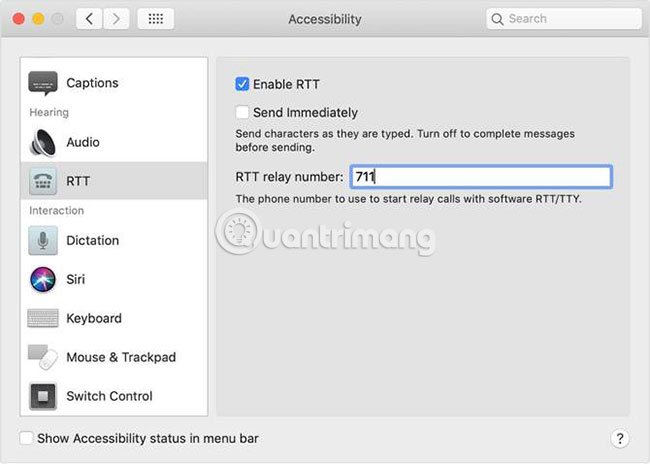
Make a RTT call on macOS
After installing everything, making RTT calls on macOS is quite simple. You will use the FaceTime feature for calls, but you can also start RTT calls from the Contacts application .
- To start the RTT call in FaceTime, click the call button, then select RTT Call or RTT Relay Call from the menu.
- To start the RTT call from the Contacts application , hover over a phone number, then select the RTT icon . You saw this icon earlier while setting up calls RTT (phone image on the keyboard).
When the person on the other end answers, click on the RTT icon to start exchanging text messages. You can speak through the microphone when doing this or combining words and text when you see fit. Clicking on the RTT icon again will hide this feature.
To answer RTT calls, apply the same steps above.
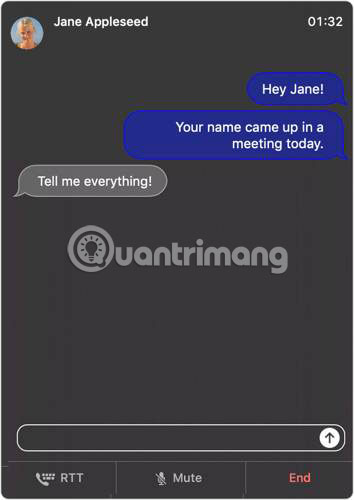
An important note is that some carriers will disconnect RTT calls if you do not exchange any messages. Whether you can make RTT calls will depend on the carrier. The RTT call feature is not supported in all regions, so check the availability of services in your area.
How to use RTT call on iOS
Although the feature called RTT has appeared on the iPhone longer than macOS, but this is not a widely advertised feature. As long as there is an iPhone 6 and above, you can already make an RTT call.
Set up RTT call on iPhone
On the iPhone, open the Settings app , then scroll down to the General section . In this menu, select Accessibility. Here, scroll down until you find the RTT / TTY option in Hearing.
Activate Software RTT / TTY and you will see some other pop-up options. Relay Number should be set by default. If this section is empty, enter the number for the area in which you live.
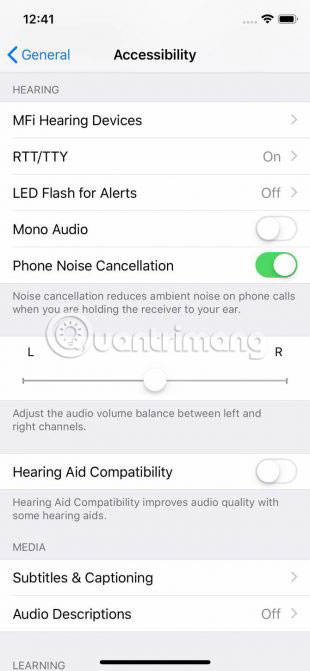
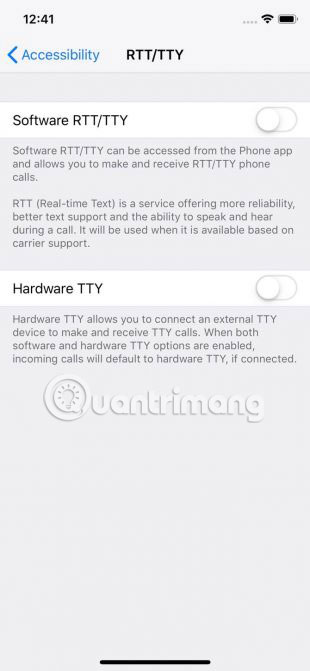
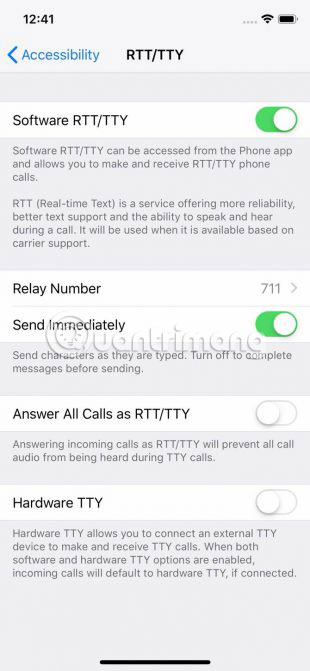
You also have the option to Send Immediately, displaying the characters as soon as you enter them (as mentioned above). If this option is turned off, you can enter the entire message content before sending. Another option is Answer All Calls as RTT / TTY .
Make a RTT call on iPhone
Making a call with RTT is as simple as making any other call. Open the Phone app, select a contact and click on the number. Now instead of selecting Call [Name] , click RTT / TTY Call or RTT / TTY Relay Call .
Wait until the call is connected, then select RTT next to the Keypad icon . You can also convert a call to RTT at any time. Just press Use RTT next to the End Call icon .
By default, calls to RTT will keep the microphone active. If using only text, touch the microphone icon in the upper right corner of the screen. To end the call, touch the Back button, then press the End Call icon .
Make and receive RTT calls on other iOS devices
You can also make and receive RTT calls on your iPad or iPod Touch. To do this, all you need to do is set up the Wi-Fi Calling feature on your iPhone. Then, make sure that the other device you want to use to call RTT is activated in Allow Calls On .
Are you surprised to know that RTT is integrated into both macOS and iOS? Chances are this is not the only feature you have missed. If you are curious to know more, take a look at the latest posts in macOS Mojave and iOS 12.2.
You should read it
- Google Maps can now accurately tell you how fast you are moving in real time
- Smart paper has the ability to create electronic drawings in real time
- YouTube updates the real-time statistics feature
- How to turn off real-time protection in Microsoft Defender on Windows 10
- Apple Maps application supports displaying real-time traffic situation in Vietnam
- The real-time translation feature officially docked the Google Translate app
 8 iPhone apps can be locked with Touch ID or Face ID
8 iPhone apps can be locked with Touch ID or Face ID How to obscure notification content on iPhone
How to obscure notification content on iPhone How to give lucky money to friends and relatives by e-wallet Momo
How to give lucky money to friends and relatives by e-wallet Momo How to block ads, turn off Youtube ads on iPhone
How to block ads, turn off Youtube ads on iPhone How to transfer songs with the iPhone volume button
How to transfer songs with the iPhone volume button How to use NessVPN application on iPhone
How to use NessVPN application on iPhone